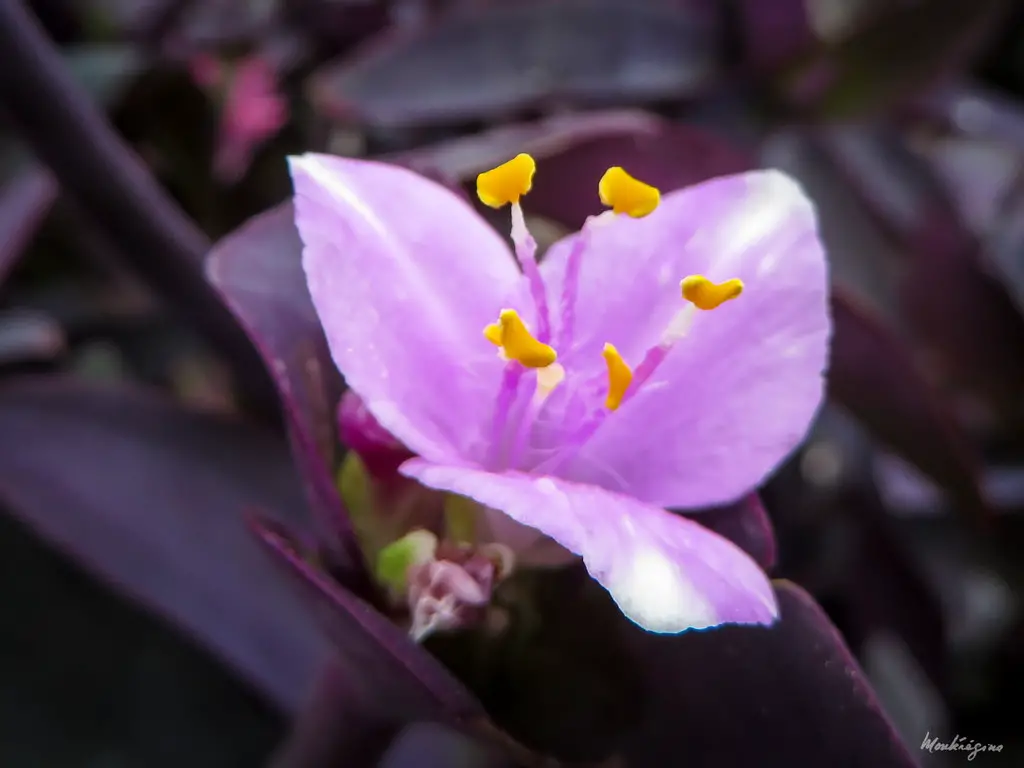The Purple Heart Plant, a striking perennial known for its vibrant purple foliage, is a popular choice among gardeners and indoor plant enthusiasts. Its long, trailing stems with heart-shaped leaves create a cascading effect, making it a favorite for hanging baskets or as ground cover. Often seen in warmer climates, the Purple Heart Plant is not only visually appealing but also highly adaptable, thriving in various environments.
Native to Mexico, the Purple Heart Plant is part of the Commelinaceae family. It is characterized by its lush purple leaves that offer an unusual color texture in gardens or interior spaces. When provided with adequate sunlight, it produces small, three-petaled pink flowers, adding to its ornamental appeal.
Cultivating the Purple Heart Plant is relatively easy, making it suitable for both novice and experienced gardeners. Its robust nature and distinctive appearance have led to its widespread popularity. To grow this beautiful plant successfully, understanding its specific requirements for light, water, soil, and other care essentials is vital.
| Aspect | Details |
|---|---|
| Common Names | Purple Heart Plant, Wandering Jew, Moses in the Cradle |
| Botanical Name | Tradescantia pallida |
| Family | Commelinaceae |
| Plant Type | Perennial |
| Mature Size | Up to 1 foot tall, 2-3 feet wide |
| Sun Exposure | Full Sun to Partial Shade |
| Soil Type | Well-drained, Sandy, Loamy |
| Hardiness Zones | 7-11 |
| Native Area | Mexico |
Purple Heart Plant Care
Caring for the Purple Heart Plant is typically simple and rewarding. The plant’s resilience and adaptability to various conditions make it an excellent choice for both indoor and outdoor gardening. Whether you choose to grow it in pots or directly in the ground, it provides a vivid burst of color with minimal effort.
The Purple Heart Plant’s vibrant coloration requires regular sunlight, but it can also tolerate some shade. Regular watering, proper soil, and occasional pruning are vital to maintain its attractive appearance. When cared for appropriately, the Purple Heart Plant will reward you with lush growth and seasonal blooms.
Light Requirement for Purple Heart Plant
The Purple Heart Plant thrives in full sun to partial shade. Providing at least six hours of direct sunlight will ensure that the plant maintains its vibrant purple coloration. In lower light conditions, the leaves may revert to a green shade, losing some of their distinctive color.
Soil Requirements for Purple Heart Plant
A well-drained soil that retains some moisture is ideal for the Purple Heart Plant. Sandy or loamy soils that are slightly acidic to neutral (pH 6-7) provide an excellent environment for growth. Proper drainage is crucial to prevent root rot and other related problems.
Water Requirements for Purple Heart Plant
This plant prefers consistent moisture but can tolerate some drought. Watering should be done when the top inch of the soil feels dry, and over-watering should be avoided to prevent rot and other issues.
Temperature and Humidity
The Purple Heart Plant prefers temperatures between 65-80°F (18-27°C) and can tolerate higher humidity levels. In cooler regions, it should be grown indoors or as an annual.
Fertilizer
A balanced, slow-release fertilizer applied in the spring can boost growth and maintain the rich color of the leaves. An all-purpose fertilizer with a ratio of 14-14-14 works well.
Pruning Purple Heart Plant
Regular pruning helps maintain the desired shape and encourages bushier growth. Cutting back leggy stems or pinching off the tips can enhance the appearance of the plant.
Propagating Purple Heart Plant
Propagation is easily done through stem cuttings. Cut a healthy stem, remove the lower leaves, and place it in soil or water until roots develop.
How To Grow Purple Heart Plant From Seed
Growing from seeds is less common but possible. Plant the seeds in well-draining soil and keep them moist. Germination usually takes 1-2 weeks.
Common Pests & Plant Diseases
Spider Mites
A sign of spider mites may be fine webbing on the plant. Treat with insecticidal soap.
Root Rot
Over-watering can lead to root rot. Ensure proper drainage to prevent this issue.
Common Problems With Purple Heart Plant
Leggy Growth
Insufficient sunlight may lead to leggy growth. Move to a sunnier location if needed.
Fading Color
A lack of sunlight can cause the purple color to fade. More sun exposure can restore the vibrant hue.
Over-Watering
Yellowing leaves and weak stems may indicate over-watering. Adjust the watering schedule accordingly.
Pro Tips
- Consider growing the Purple Heart Plant in hanging baskets to showcase its trailing growth.
- Keep an eye on the sunlight exposure to maintain the plant’s vibrant purple color.
- Ensure proper drainage to avoid over-watering problems.
- Trim regularly to maintain shape and promote denser growth.
- Plant alongside other succulents or drought-tolerant plants for an attractive, low-maintenance garden display.




